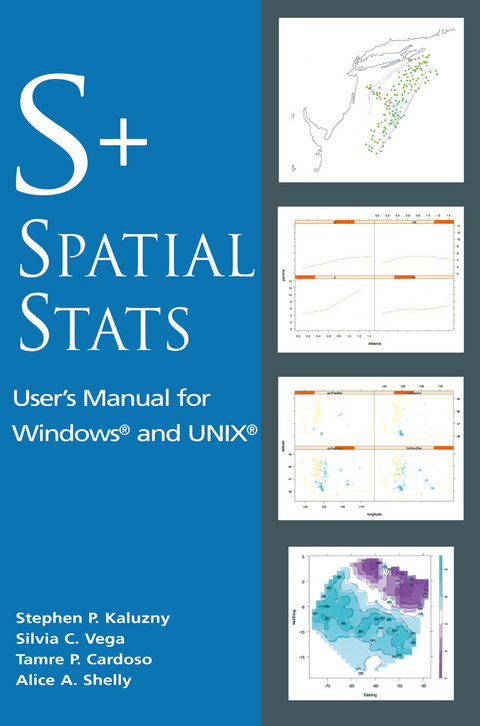
S+SpatialStats
Springer-Verlag New York Inc.
978-0-387-98226-7 (ISBN)
S+SPATIALSTATS is the first comprehensive, object-oriented package for the analysis of spatial data. Providing a whole new set of analysis tools, S+SPATIALSTATS was created specifically for the exploration and modeling of spatially correlated data. It can be used to analyze data arising in areas such as environmental, mining, and petroleum engineering, natural resources, geography, epidemiology, demography, and others where data is sampled spatially. This users manual provides the documentation for the S+SPATIALSTATS module.
1 Introduction to Spatial Data and S+SpatialStats.- 1.1 Types of Spatial Data.- 1.2 Analysis of Spatial Data.- 1.3 Stochastic Model for Spatial Data.- 1.4 Spatial Analysis Tools in S+SpatialStats.- 1.5 Limitations.- 2 Getting Started with S+SpatialStats.- 2.1 Starting and Quitting S+SpatialStats.- 2.2 Getting Help for S+SpatialStats Functions in Windows.- 2.3 Graphics Devices.- 2.4 Using Trellis Graphics in S+SpatialStats.- 2.5 Importing and Exporting Spatial Data.- 2.6 Sample Data Sets Available in S+SpatialStats.- 3 Visualizing Spatial Data.- 3.1 EDA Tools.- 3.2 Applications of EDA to Geostatistical Data.- 3.3 Applications of EDA to Lattice Data.- 3.4 Applications of EDA to Point Patterns.- 3.5 Hexagonal Binning.- 4 Analyzing Geostatistical Data.- 4.1 Variogram Estimation.- 4.2 Modeling the Empirical Variogram.- 4.3 Kriging.- 4.4 Simulating Geostatistical Data.- 5 Analyzing Lattice Data.- 5.1 Spatial Neighbors.- 5.2 Spatial Autocorrelation.- 5.3 Spatial Regression Models.- 5.4 Simulating Lattice Data.- 6 Analyzing Spatial Point Patterns.- 6.1 Objects of Class “spp”.- 6.2 Measures of Spatial Randomness.- 6.3 Examining First- and Second-Order Properties.- 6.4 Simulating Point Patterns.- 7 S+SpatialStats and GIS.- 7.1 ARC/INFO Coverages and Spatial Data Analysis.- 7.2 Example: Analysis of a Point Coverage.- 7.3 Example: Analysis of a Polygon Coverage.- 7.4 Example: Analysis of a Grid.- Appendices.- A.1.1 Requirements.- A.1.2 Installation Procedure.- A.1.3 Verifying Installation.- C Sample Data Sets.- D Function Reference.
| Erscheint lt. Verlag | 24.3.1998 |
|---|---|
| Zusatzinfo | XVI, 328 p. |
| Verlagsort | New York, NY |
| Sprache | englisch |
| Maße | 178 x 235 mm |
| Themenwelt | Mathematik / Informatik ► Mathematik ► Computerprogramme / Computeralgebra |
| Mathematik / Informatik ► Mathematik ► Wahrscheinlichkeit / Kombinatorik | |
| Naturwissenschaften ► Geowissenschaften ► Geografie / Kartografie | |
| ISBN-10 | 0-387-98226-4 / 0387982264 |
| ISBN-13 | 978-0-387-98226-7 / 9780387982267 |
| Zustand | Neuware |
| Informationen gemäß Produktsicherheitsverordnung (GPSR) | |
| Haben Sie eine Frage zum Produkt? |
aus dem Bereich


